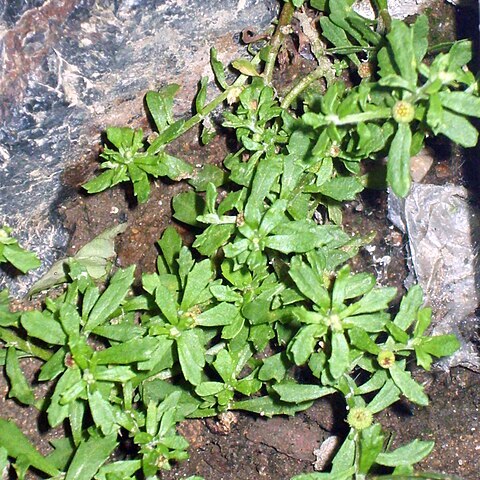Capitula small, solitary and sessile or subsessile, or in racemes, heterogamous, discoid. Involucre subhemispheric; phyll. subequal, in c. 2 series, margins scarious, receptacle nude. ♀ exterior in several rows, fertile, with minute tubular corolla. Florets of disk few, perfect, ± campanulate. Anthers obtuse at base, style-arms of perfect florets truncate. Achenes bluntly 3-4-ribbed; pappus 0. Annual to perennial herbs with alt. lvs. A genus of some 15 spp., mostly of Chile, but a few in Madagascar, tropical Asia, Australia. The N.Z. sp. widespread, doubtfully indigenous.
Annual or perennial herbs, taprooted and sometimes rooting at nodes. Lvs simple, entire or toothed, alternate. Capitula axillary or terminal, sessile or shortly pedunculate; involucral bracts in 2 rows, with membranous margins. Receptacle hemispheric; scales 0. Outer florets ♀, in several rows, tubular, yellowish; inner florets ☿, tubular. Achenes all similar, obpyramidal, square in section, distinctly 4-ribbed, with scattered glandular hairs on faces; ribs blunt, hairy; pappus 0.

